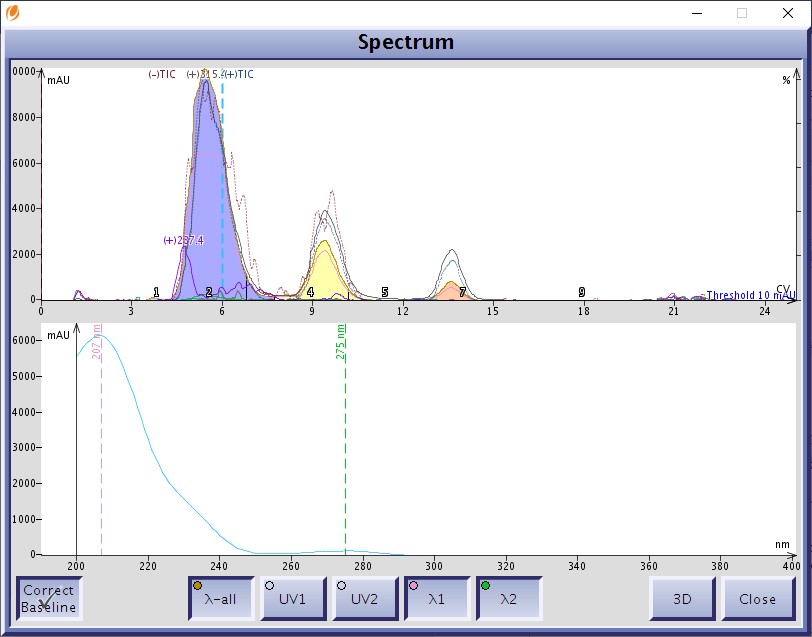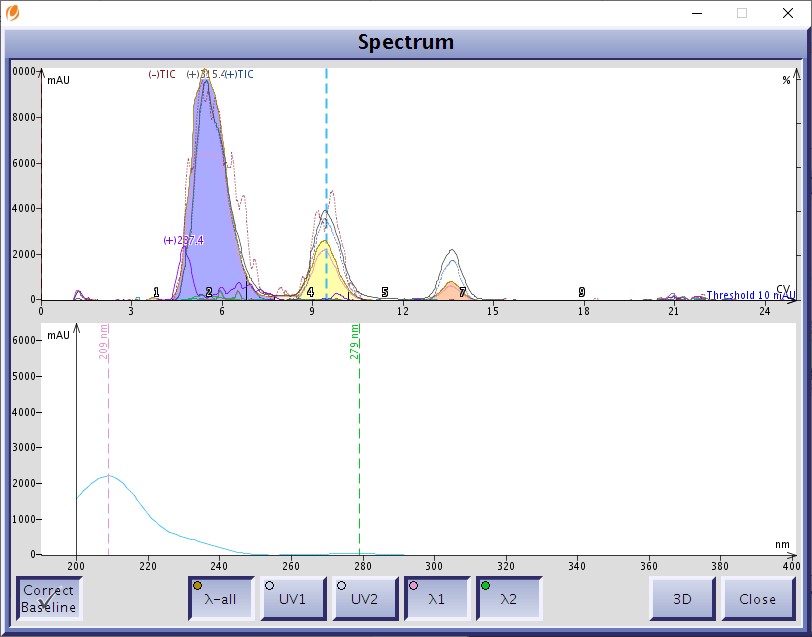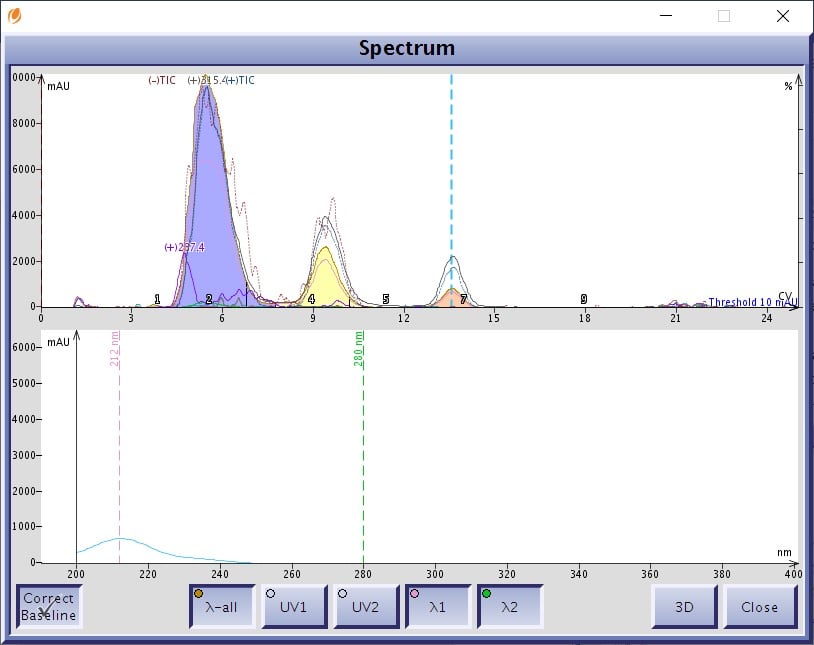Flash chromatography is the go-to cannabinoid purification technique because of its effectiveness and relative ease of use. This technology can easily remove THC from CBD in a process known as THC remediation. Flash chromatography is also used to separate and isolate other cannabinoids as well (CBN, CBC, CBG, CBDA, CBCT, etc.).
To determine when a cannabinoid, or other extracted compound, is eluting from a chromatography column, flash purification systems employ ultraviolet (UV) detectors. All cannabinoids absorb UV light enabling their detection during purification. When a cannabinoid is detected, it is a signal to the flash chromatography system that this compound should be collected. Automated flash chromatography systems have the UV-triggered collection built into its software, simplifying cannabinoid purification.
While UV-triggered fraction collection is a broad-spectrum detection application, kind of a catch-all solution, it does not discriminate between individual cannabinoids. While the chromatography does the separation and the UV does the generic detection, there is nothing telling you which cannabinoid is being detected/collected. Even if you know each cannabinoid’s elution order, you cannot be certain of its identity until you have the individual collected fractions tested.
Well, that’s not entirely true as some automated flash chromatography systems have a specific type of UV detector called a photo-diode array detector (PDA). With the PDA detector, such as the units installed on Biotage® Selekt and Isolera flash systems, the full UV spectrum of each separated compound is viewable for analysis. This can be very enlightening as each cannabinoid has its own UV spectrum which can be used to distinguish and identify individual cannabinoids.
The UV spectrum is seen as a series of waves of different amplitude along a wavelength range. Peaks along these waves are known as UV maxima. Each cannabinoid has at least two UV maxima occurring at different wavelengths, Figure 1.
.jpg)
Figure 1. An example of a compound's UV spectra. UV light is absorbed at differing intensities (maxima) over a range of wavelengths. UV maxima for this compound are 219 nm and 283 nm.
In fact, Hazekamp, et al (Hazekamp, 2005) published an article showing that each cannabinoid’s UV spectrum is indeed different. While these differences can be subtle or distinctive, the data will assist you in determining the likely identity of each separated and collected cannabinoid, Figure 2.



Figure 2. Chromatographic separation of a hemp extract with individual cannabinoid PDA UV spectra. Top - CBD with UV absorption maxima 207 nm and 275 nm. Middle - THC UV with absorption maxima 209 nm and 279 nm. Bottom – CBCT UV with absorption maxima 212 nm and 280 nm.
Since each cannabinoid possesses different UV absorption properties, the observed data can be used to qualitatively identify individual cannabinoids.
To learn more about cannabis component purification, please read my previous post on minor cannabinoid separation by reversed phase flash chromatography:

 Organic Workflow
Organic Workflow Peptide Workflow
Peptide Workflow Scale-Up Flash Purification
Scale-Up Flash Purification  Sample Preparation
Sample Preparation Biomolecule Purification
Biomolecule Purification Oligo synthesis
Oligo synthesis Scavengers and Reagents
Scavengers and Reagents Service & Support
Service & Support Accessories & Spare parts
Accessories & Spare parts Investors
Investors Reports & News
Reports & News The Share
The Share Corporate Governance
Corporate Governance Calendar
Calendar Sustainability
Sustainability Our Offering
Our Offering Our History
Our History Our Locations
Our Locations Leadership
Leadership